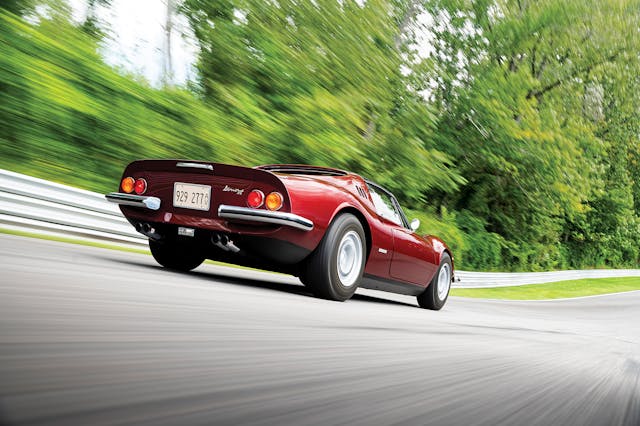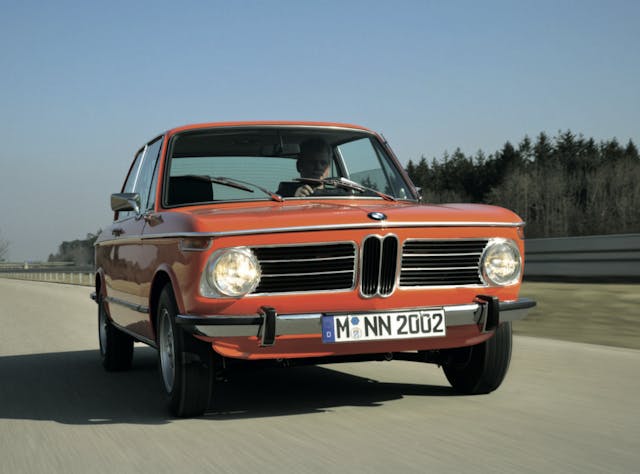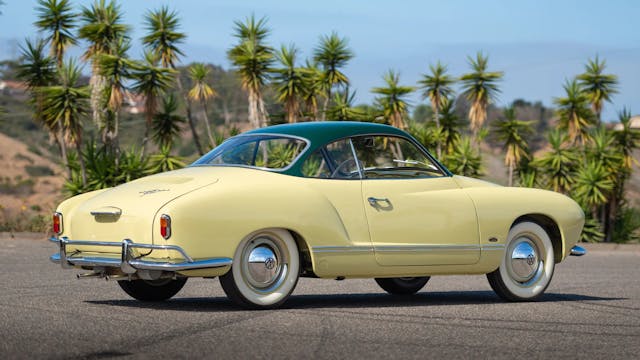Media | Articles
Hagerty Price Guide Indexes Show a Market Searching For Equilibrium
The Hagerty Price Guide Indexes—first published in 2009—are a series of stock market-style indexes that average the condition #2 (“excellent”) values of representative vehicles, or “component” cars, from a particular segment. These indexes are updated quarterly and provide an overview of how these segments of the collector car market are performing overall, as well as relative to each other.
Following a massive rally from 2020 to the middle of 2022, the collector car market continues to search for equilibrium. The seven main Hagerty Price Guide indexes reflect this. Since our last update in January, four of the indexes declined, two remained unchanged, and only one increased in value. The decreases recorded this period were some of the biggest we’ve seen over the last four years, although still nowhere near the levels we saw during the major market downturn of 2009.
The biggest decreases were for the American Muscle Car Index (down 5 percent), the Ferrari Index (down 4 percent), and the Blue Chip Index (down 3 percent). The only one to increase was the Affordable Classics Index, and its growth was modest at 1 percent. Below is an overview of each index’s performance so far in 2024.

Blue Chip Index
The Hagerty “Blue Chip” Index of the Automotive A-List is a stock market-style index that averages the values of 25 of the most sought-after collectible automobiles of the post-war era.

Hagerty’s Blue Chip Index decreased by 3 percent from January to April 2024. This was the index’s largest drop since COVID-19’s initial market shock in May 2020. This news may be softened by the fact that just a few cars drove the dip—four cars in this group saw prices fall, while 18 remained flat and three increased.
Marketplace
Buy and sell classics with confidence
Most significantly, both the LWB and SWB Ferrari 250 California Spiders retreated 6 percent since January, and the 1970 Plymouth Hemi Cuda convertible stepped back 7 percent, which was more than enough to offset the small gains recorded by the Alfa Romeo TZ-2, 1973 Porsche 911 Carrera RS, and 1953 Corvette. Overall, this period’s performance reflects buyers’ caution at this price level. Cars with exceptional provenance receive a lot of interest, while cars with less notable history are a tougher sell.

***
British Car Index
The Hagerty Index of British Cars is a stock market-style index that averages the values of 10 of the most iconic British sports cars from the 1950s-70s.

Hagerty’s British Car Index remained unchanged for the second consecutive period and is now 1 percent below where it stood a year ago. The small overall change masks some volatility happening at an individual level, though. Of this index’s 10 component cars, four increased in value, four decreased, and two held steady.
There is no unifying theme that neatly describes these changes. The gainers like the Jaguar XK 120 (up 12 percent), Mk I MGB (up 6 percent) and Triumph TR6 (up 5 percent) span similar eras and budgets as the losers, like the Austin-Healey 100M (down 4 percent), Series I Jaguar E-Type (down 4 percent), and MGA Roadster (down 2 percent). Indeed, despite ups and downs for specific cars, the index is only 1 percent above where it was in 2021. This segment was mostly insulated from the soaring prices of the last few years so isn’t likely to experience an ensuing correction.

***
Ferrari Index
The Hagerty Ferrari Index is a stock market-style index that averages the values of 13 of the most sought-after street Ferraris of the 1950s-70s.

Hagerty’s Ferrari Index walked back most of the positive ground it gained in 2023 with a 4 percent fall. This was the first time since May 2020 that the index went backwards, and it now stands 1 percent below where it was a year ago.
More than half of the cars that comprise this index decreased, with high-flyers like the California Spider, 250 GT SWB, and 250 LM all losing between 5 and 6 percent. The 330 GT’s 9 percent decline was the steepest drop in percentage, while the 250 LM’s $1,050,000 hit was the deepest in terms of dollars. The 246 GTS Dino notched a noteworthy slip at 4 percent, marking a slight adjustment to an otherwise lengthy upward march.
The lone increase was recorded by the Daytona Spider (up 4 percent), following a pair of strong public sales for the rare model. As with Blue Chip cars in general, vintage Ferrari buyers are increasingly selective.

***
American Muscle Car Index
The Hagerty Index of American Muscle Cars is a stock market-style index that averages the values of the rarest and most sought-after muscle cars.

Hagerty’s American Muscle Car Index fell for the third time in four quarters, with a 5 percent drop. The index is down 8 percent during the last 12 months, and a similar 6 percent over the last 24.
Ford products mostly bucked the negative trend, with the Boss 429 Mustang gaining 9 percent and the Mercury Cougar GTE inching up 2 points (the Shelby GT500 KR convertible disagreed with a 5 percent slip). Chevy’s representation was mixed: the 1970 LS6 Chevelle SS coupe surged 7 percent, the 1968 Yenko Camaro held firm, and the 1964 Impala SS 409 convertible fell 5 percent. Mopar recorded the two biggest drops, with the Hemi Superbird adjusting downward a massive 24 percent, and the Hemi Cuda convertible shedding 7 points.
Muscle Cars were one of the biggest winners from 2020 to 2021, but now they are still adjusting to the market’s new rules. Even as prices ratchet down, this group is still 40 percent above where they were pre-pandemic.

***
German Car Index
The Hagerty Index of German Cars is a stock market style-index that averages the values of 21 of the most sought-after cars from BMW, Mercedes-Benz, and Porsche from the 1950s-70s.

No index has been steadier than Hagerty’s German Cars Index, which has been treading water for four consecutive quarters.
Nearly half of this group’s cars didn’t move a dollar over the last four months, while eight increased and three fell. The biggest rises went to the Porsche 930 (up 10 percent), the BMW 2002tii (up 7 percent), and the BMW M1 (up 5 percent). Those changes and the nominal increase from some other cars weren’t enough to overcome some smallish decreases to more expensive Mercedes, like the 3 percent stumble for the 300Sc Cabriolet, or the 2 percent falls for the 190SL and 280SL.
German cars from the 1950s to 1970s recorded measured but modest gains earlier this decade compared to more modern Porsches and Mercedes-Benzes, which means they now aren’t experiencing as significant a correction.

***
1950s American Car Index
The Hagerty Index of 1950s American Classics is a stock market-style index that averages the values of 19 of the most sought-after collectible American automobiles of the 1950s.

Hagerty’s Index of 1950s American Cars continued its streak of modest but reliable downward moves. The index fell for the fourth consecutive period at 1 percent, and is now 5 percent below where it was in 2023. Of the index’s 19 cars, 12 saw no change, two increased in value, and five fell. The index is now at the same value it was five years ago in nominal dollars, although the story looks worse after factoring inflation into the view.
The 1950 Oldsmobile woody wagon took the biggest hit at 15 percent, while the 1954 Buick Skylark and 1957 Ford Thunderbird both stepped back 5 percent. The lone increases were the Chrysler 300C (up 4 percent) and the 1956 Ford Sunliner convertible (8 percent).
This era and style of car still skews towards older owners, and will likely stay that way for quite a while, which is a drag on their appreciation potential. However, Baby Boomers are still very active in the market, which keeps interest in these cars consistent.

***
Affordable Classics Index
The Hagerty Index of Affordable Classics is a stock market-style index that averages the values of 13 undervalued cars, priced around $40,000, from the 1950s-70s.

Hagerty’s Affordable Classics Index had a gain of 1 percent during the first quarter of 2024. This is a small recovery after the previous quarter’s 3-percent drop, and the group is still 1 percent down over 12 months.
Of the index’s 13 cars, six rose in value, three slid, and four were static. Notable increases were the Studebaker Lark convertible’s 10 percent climb, the Mk I MGB’s 6 percent gain, and the Datsun 240Z’s 5 percent bump. Volkswagens didn’t fare so well, with the Beetle shedding 4 percent and the Karmann Ghia dropping 2 percent.
Interest has shifted to newer eras of cars, where the same amount of money can secure a car with superior performance and usability. This also means pricing volatility has shifted more towards those eras, meaning this flavor of car carries less risk (and less reward) for now.

***



















Seems like the current trend is still cautious. Problem for the so called “affordable” section is financing is much higher than it used to be so it is less so than it used to be.
The similarity in values – not to mention performance – between the Ferrari and Blue Chip Indexes renders the Ferrari Index somewhat redundant.
You’d have a much more representative – and fundamentally more diverse – Ferrari Index by kicking the $1MM+ Ferraris into the Blue Chip and adding models like the Testarossa, BB365/512, and the various 3XX V-8 powered models to the Ferrari Index.
This is a statistical analysis of pretty small samples in most cases. It would be made more interesting and relevant if the number of sales for each percentage was noted. The more sales, the reliable the figure.
Is it possible to order a Hagerty Price guide ?
What is the best way to keep up with what’s hot and what’s cooling off as far as American muscle cars and c/10s
Hi Danny,
Thanks for reading! For valuation changes on specific cars, you can go here: https://www.hagerty.com/valuation-tools . We do also publish stories every quarter about what cars gained and lost the most, and we frequently cover Hagerty Price Guide trends and values in stories at insider.hagerty.com . Subscribing to the Insider newsletter will get you a weekly email, and while we cover the whole market, American cars are a big part of the content.